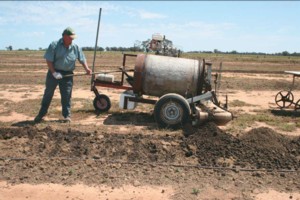Did you know that, among the 3000-odd species of worms that exist around the world, there are two main types we should consider when trying to establish a healthy garden? First, there are composting worms, which live and work in compost heaps above the ground; then there are the worms that live beneath the surface, known as earthworms.
Earthworms can live as deep as a metre below the surface. When they want to feed, they just wriggle to the top 100mm of earth, eat, make compost and then go back down again when they’ve finished. Compost worms, on the other hand, live above ground, feeding in the top 100mm of the compost heap. So, in essence, there’s a tag team system going on with these worms. First, the composting worms work on all the organic waste we humans create and add to our compost bins. Then, if the compost hasn’t quite broken down enough before we excitedly add it to the garden, the earthworms are there waiting and willing to complete the job. They’ll break it down and turn it into worm castings, better known as worm juice or worm wee, which I consider to be nature’s nectar for all plant life.
To create a thriving organic garden, one of the first things you need is worms and lots of them. Get out there a buy some and start composting. There’s no better time than National Recycling Week to start making that extra effort, and there’s no better way to start than by recycling all your green organics. Here’s a list of items you can add to worm compost:
? All your greens, including vegetables and fruit
? Paper, cardboard, newspaper (not this page)
? Manure, grass, leaves from the garden
? Hair, vacuum bag contents
? Soil
? Straw mulch
? Egg shells
Don’t add meat or plastic to your compost and only put in small amounts of onion. Nature is always amazing and, when it comes to worms, I have full respect for them and so should you. Worms were here millennia before us and I can assure you they’ll be here thousands of years after we’re gone. One thing’s for sure — they’re waiting for us!





